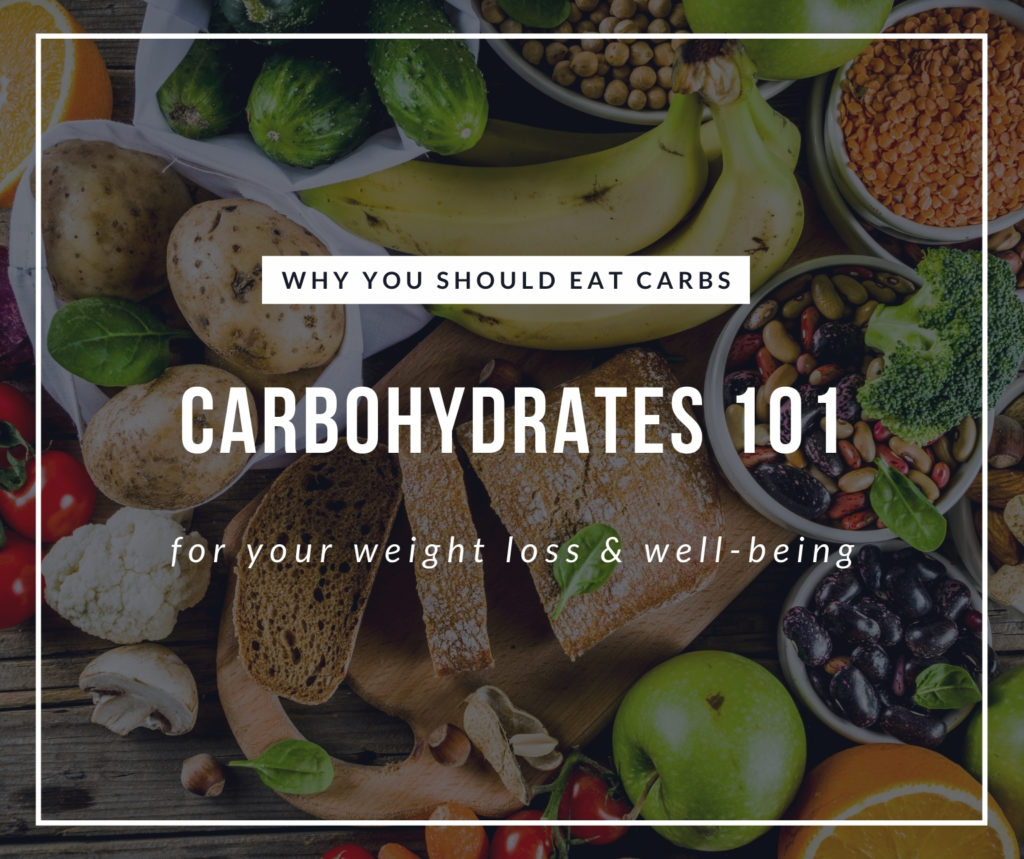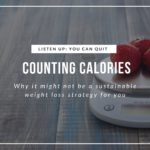In this post we’re going to take a deep dive on the scariest topic on the internet. Buckle up, because we’re talking carbs.
Over the last few years, carbohydrates have been really demonized as being bad for you. There are countless articles and social media posts that point to carbs as the #1 cause of unwanted weight, and dozens of low-carb or no-carb diets have sprung up to ‘help’ people avoid them.
There are constant stories about celebs losing weight by ‘cutting carbs’, and any influencer worth their salt has something to say about why you should be avoiding carbs at all costs.
It’s no wonder so many people are scared of carbs right now.
But carbs aren’t bad. In fact, your body needs carbs — and quite a lot of them — to function normally.
Your cells, muscles, organs and brain all rely on carbs for fuel and regeneration. They are your body’s preferred energy source and have a really positive impact on focus, performance and memory. So what’s all the fuss about?
Well, carbohydrates exist on a continuum. There are many different types of carbs, and not all carbs are created equal. The carbohydrates you get from broccoli, say, are not the same as the carbs you get from candy.
To understand the differences, and to figure out which carbs are good for you and which should be saved for indulgences, let’s go over what carbs do in your body.
When you eat a carbohydrate, your digestive system breaks it down into simple sugars (glucose). Some of the glucose is sent to your cells through your bloodstream for immediate use. Some will be sent to your muscles, and your brain, based on what your body needs at that moment. The rest travels to your liver to be used for energy and to be stored as glycogen.
But here’s the kicker: once the glycogen stores in your liver and muscles are full, any glucose that’s left over will be stored as fat.
This excess storage is what gets people freaking out so much.
What Is A Carbohydrate?
Carbohydrates are organic molecules classified as ‘simple’ (monosaccharides or disaccharides, meaning they have 1 or 2 sugar molecules in their structure) or ‘complex’ (oligosaccharides and polysaccharides, which have more than 2 sugar molecules linked together).
Simple carbs are generally quick to digest, as they’ve often had some components removed. This is why they can also be called ‘refined’ carbs. These are the carbs that don’t look like what they’re made from: white bread, pasta, crackers, candy and so on. The end product is very different from the original ingredients because they’ve been so extensively refined.
Simple carbs are usually very quick to digest, because all the fiber has been removed during refining. This means that you often want another helping soon after eating, and because they are usually high in sugar too, they’re also associated with cravings.
All this means that simple carbs can kick off a cycle of overeating, which of course, leads to excess glucose in the blood sugar which then has to be stored.
Complex carbs, on the other hand, usually take longer to digest, as their natural fiber and other nutrients have not been removed. You’ll notice that most complex carbs are still in their original form, or pretty close to it: fruit and vegetables, oats and grains, beans and legumes are all great examples.
The higher fiber content keeps you fuller for longer, and the additional vitamins and minerals can give you a significant boost in mental and physical performance. The sugar content is usually lower, and so you’re less likely to end up quickly craving more.
The Carb Continuum
Like I said earlier, not all carbs are created equal, and you can think of them as being on a continuum.
On the left-hand side of the continuum, you have the simple, refined carbs that tend to be high in sugars: ice cream, pastries, candy and so on. If you move to the center, you’ll start to see things like pasta, bread and white rice. And as you go further to the right, you’ll find whole grains, beans, fruits, and veggies.
The idea is that as you get more familiar with what different carbs do to your body, and which serve your goals best, you’ll be able to start consistently choosing from the right point of the continuum to keep making progress.
I discovered the “carb continuum” when I was an Assistant Coach for Precision Nutrition’s program. We had close to 300 women in our group, and we focused a lot on helping each of them start to be mindful of their carbohydrate choices, picking smarter ones where they could.
It’s also key to understand that each person needs a different amount of carbs and is going to respond better to some carb sources than others.
This is why a little bit of education about nutrition can go a really long way. Different foods affect different people in different ways, and we are all going to have unique needs depending on our levels of activities, genetics and tastes.
That means that it takes time and experimentation to figure out what works best for your individual needs and goals. But I know that it can be helpful to have an example to help get you started on that process — and that just telling you not to be afraid of carbs might not be enough to convince you.
So, to prove my point that carbs are totally fine to eat, here’s a breakdown of what I eat each day — which you will notice includes carbs in some form at every meal.
A Day’s Worth of Carbs
For breakfast, I usually alternate between eggs in a variety of styles, and oats with some protein powder and mixed grains.
Usually it’s eggs with lots of veggies, or an oat-based muesli. I don’t think about it too much — both those options are very satisfying.
The oat breakfast will usually have berries and nuts for some healthy fats and a scoop of protein to make sure I’m hitting all my macros. Oats are a complex carb, so they take a long time to digest, keeping me full for a long time and giving me a good hit of key micronutrients.
For lunch, I try to keep it as green as possible. Some days I’ll have a chock-full healthy smoothie, which usually has mixed frozen berries, protein, nut butter, Greek yogurt, and then anything we have that’s really green and leafy. Swiss chard, spinach, broccoli sprouts and so on. I’ll really chock it up and it still manages to taste good.
The other option for lunch is a hearty salad with protein.
Most days it’s tempeh or fish. Sardines are one of my go-tos (people either love this or think it’s the most disgusting thing ever), or tuna or salmon.
Then there will be a big, heaping plate of ‘salad’ — I’m not talking about just leafy greens, but as much variety as I can get in there. I’ll often include some type of bean — black beans or red kidney beans — or some quinoa, because the complex carbs fill me up and keep me satisfied long enough to get to dinner.
Dinner is usually a bit more substantial.
About half my plate will be grilled veggies, and the rest will be a protein — red meat once a week, then fish, tempeh or white meat the other nights.
I also have designated indulgences once or twice a week. We’ll have pizza or sushi, Indian or Mexican — and I just eat what I want.
I’m not tracking whether that meal fits my macros, I’m not worrying about whether it ‘fits’ with my goals, I just eat whatever I want. Sometimes on the weekend we make pancakes! I still have indulgences, I just plan for them and enjoy them mindfully.
How To Balance Your Carb Intake
If you’ve been worried about eating carbs, I hope this post has helped you see that there is a place for them in a healthy and balanced diet.
If you’re ready to tackle this, a good place to start is just to be mindful about the type of carbs you’re eating.
The idea is that you shift your consumption gradually. If you’ve been eating lots of simple carbs, that’s OK — don’t go cold turkey. And if you’re already eating mostly complex carbs, then you can look at the volume if you think your intake is too high.
For many of my clients, we just start by aiming to have 2 out of 3 meals per day free from simple carbs like bread, pasta, crackers etc. We switch them over to focusing on complex carbs instead — starchy veg like pumpkin and sweet potato, oats, beans, quinoa, wild rice and of course fruit and other vegetables.
Once that’s comfortable and steady, we can adjust the amount to make sure they are on track for their goals.
Sometimes that means reducing the amount, but often it means increasing it!
Lots of women have been eating very low-carb diets for a long time and actually need to bump their intake to help improve their wellbeing and performance.
So when you’re choosing your carbs at each meal, think about which options will add value to your body and make you healthier.
As often as you can, choose the options on the right of that continuum — the complex, slow-digesting, nutrient-rich carbs that help you look, feel, and perform better every day.
And if you want some help navigating this process, I’m here to help. Click here to learn more about how I work with clients, or click here if you would like to book a free 15-minute discovery call.





